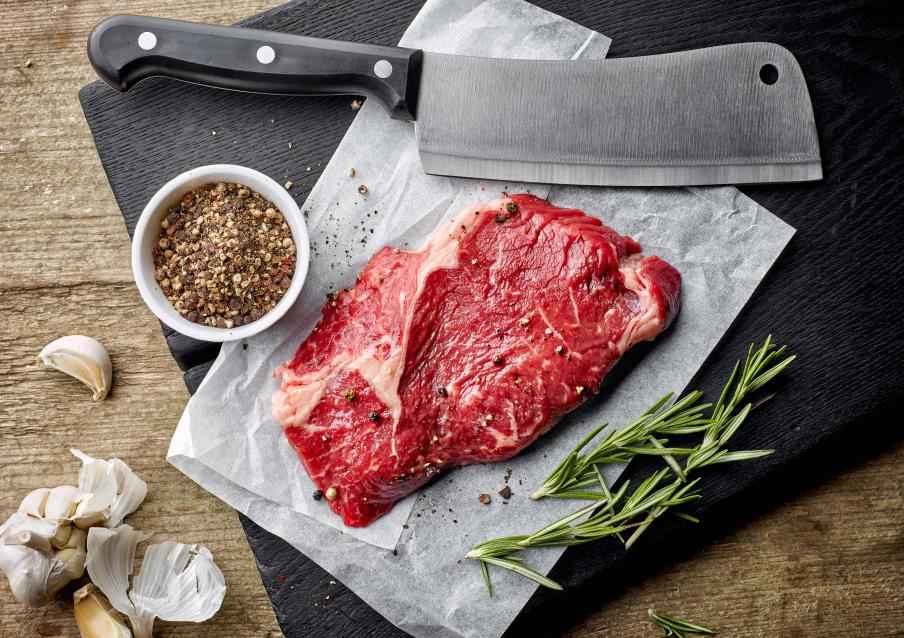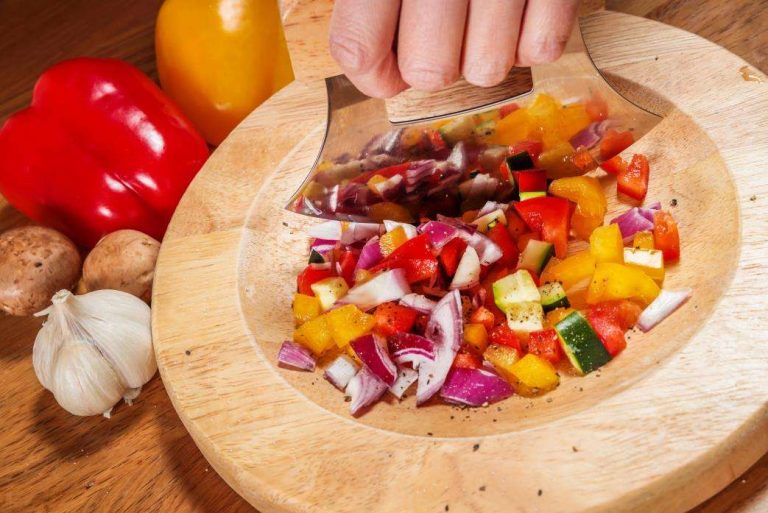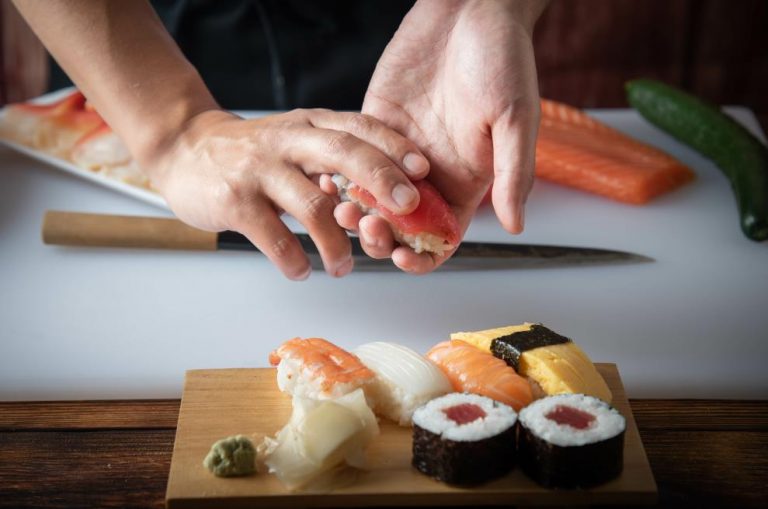The meat cleaver is an often misunderstood and underused kitchen knife. But its worth as an adjunct to the typical kitchen tools collection cannot be underestimated.
The meat cleaver is an essential tool for butchering and breaking down large pieces of meat or whole carcasses. This makes it a ‘must have’ item for anyone who processes their own meat in the home or who works in meat processing or butchery.
This article will discuss the meat cleaver in detail and also give an overview of other types of cleavers that add value to the kitchen. This product knowledge is vital for selling and marketing this class of kitchen tool so let’s educate ourselves!
Firstly,
What is a meat cleaver?
A meat cleaver is a large, heavy kitchen cutting tool with a blade that’s shaped like a squarish rectangle.
Overall design

Unlike kitchen knives that have long and thin blades, a meat cleaver looks very much like a hatchet.
When purchasing a meat cleaver, the main considerations are the meat cleaver’s size and weight, as these impact most on how it will perform.
Blade characteristics
A meat cleaver needs to be heavy in build to accomplish tasks that rely on brute force, not delicacy. For this reason, the blade of a meat cleaver is thick (particularly along the spine) and usually made of softer steel that can absorb heavy impacts.
Most meat cleaver blades today will be made from softer steels. The steel alloy used in a quality cleaver blade will make it tougher against wear and chip resistant.
The blade edge on a meat cleaver
Unlike with a kitchen knife, a razor – sharp edge on a meat cleaver blade is undesirable and edge retention is not of great concern. A very sharp edge on a cleaver will lead to chipping on the blade edge when it strikes bone.
For this reason, meat cleavers are purposely made not as sharp as kitchen knives and need little sharpening overall.
Western style meat cleavers will usually have a V ground double bevel blade with a fairly obtuse grind to avoid damage to the blade when hitting bone, whereas Asian style meat cleavers can be single bevel or have only one sharpening surface.
Other features
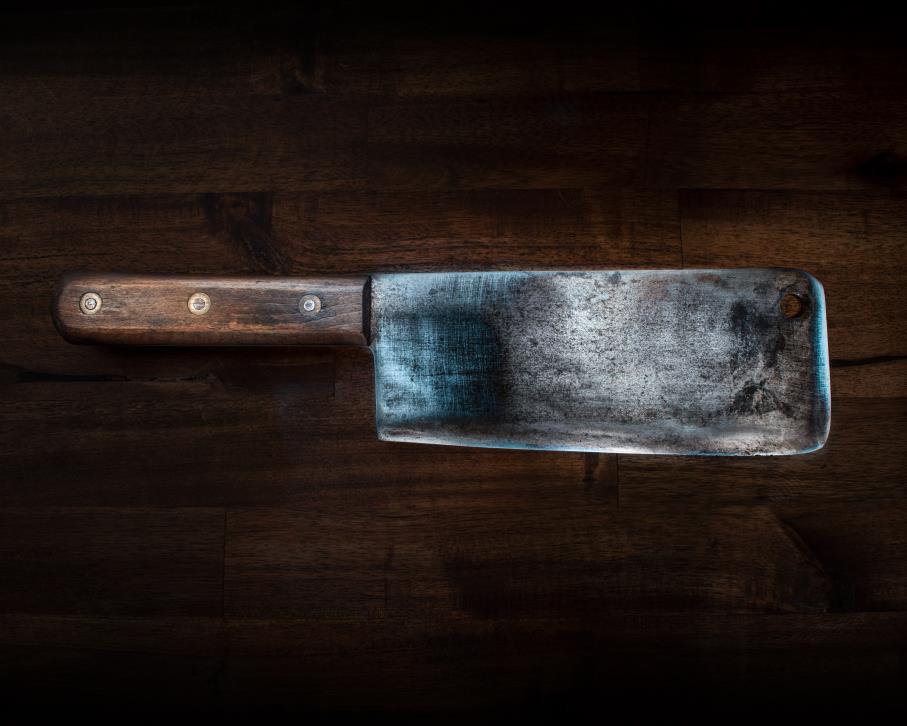
The meat cleaver features a long handle that gives control over the hefty blade.
The handle of a meat cleaver can be found in either a Western style cylindrical shape or shaped with ‘D’ shaping or octagonally, this is known as a Japanese ‘wa’ style handle. Handle style is based on customer preference for aesthetic, feel in the hand, and balance.
A meat cleaver will often feature a hole in the upper corner of the blade at the outside edge, there’ll be more info on this feature under the FAQ section of this article at the end.
What is a meat cleaver used for?
As the name implies, the meat cleaver is designed and used for breaking down animal carcasses and sectioning meat off the bone and into serving or package portions.
The weight of a meat cleaver makes it the ultimate tool for cutting through thick bones, cartilage and ligaments and breaking down primal cuts of meat. A meat cleaver is also commonly used for trimming down animal ribs, breaking off chine bones and opening up marrow bones to extract the bone marrow.
All of these are heavy duty high impact jobs that require all the heft of the meat cleaver, but a meat cleaver can also be used for:
- Prepping hard shelled seafood like lobsters
- Breaking down whole poultry/birds into pieces
- Opening up coconuts
- Vegetables – particularly hard ingredients like thick skinned squashes and gourds
- Making pastes: the side of a meat cleaver is a crusher too and can turn things like garlic and ginger into pastes
- Crushing and chopping hard spices like nutmegs or seed pods
- Breaking up large pieces of ice
The flat side of a meat cleaver is a tool all on its own and you can use this as a scooper to move ingredients from the chopping board into the pot!
Different types of meat cleaver available today
The Western butcher’s cleaver
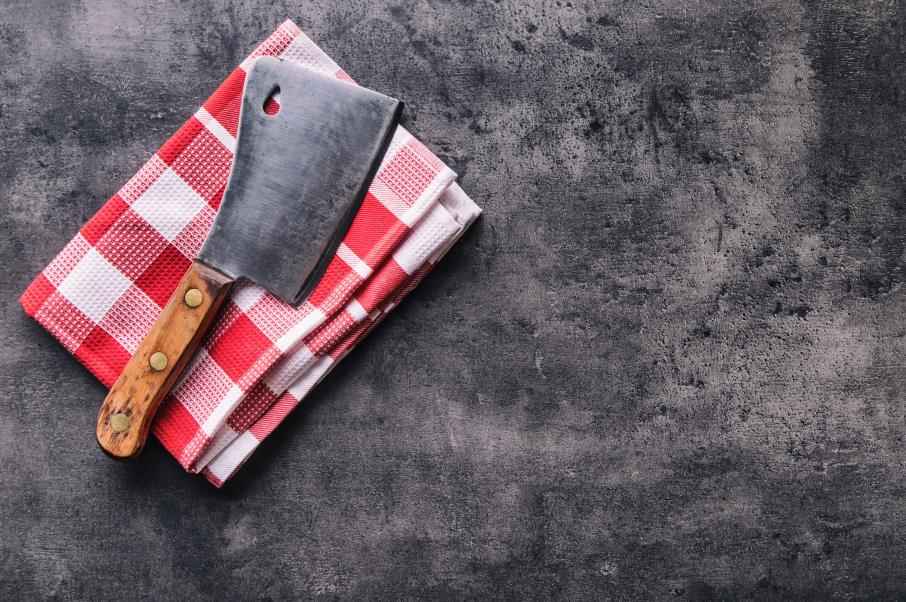
Today in Western butcheries a meat cleaver will be used, and this is often called a ‘butcher’s cleaver’. As we’ve said, this is a heavy, thick bladed tool and butchers/professionals processing meat by hand will use especially durable and weighty meat cleavers to break down large volumes of meat for sale daily.
A butcher’s cleaver will be used day in and day out on meat and its use restricted to animal carcasses as opposed to being viewed and employed as a multi – purpose food tool.
The butcher’s cleaver is regarded as part of a butcher’s essential workplace ‘kit’ and as such is expected to take a lot of use and abuse without damage to the cleaver itself.
The Chinese heavy/bone cleaver or gu dao
The Chinese also have a selection of cleavers which are used daily for many different types of food prep, and these Asian cleavers are becoming more and more popular in the Western market as customers become familiar with them and their versatility.
The Chinese heavy or bone cleaver AKA gu dao is the tool of choice for heavy butchery and breaking down meats and poultry.
Also (usually) double beveled, it offers the same blade shape and weight driven cutting action as the Western style meat cleaver, with typical blades weighing in at around 2 pounds.
Like the Western type of cleaver the gu dao will have a thick spine to the blade, making it less effort intensive to use.
It’s this weight balance concentrated in the blade that gives momentum to cuts through tough sinews and bone.
Like a Western style meat cleaver, this beauty can also be used on tough kitchen tasks like
- Cutting butchered meat into smaller pieces
- Breaking up seafood and scaling fish
- Chopping up hard and unyielding vegetables
- Prepping raw poultry
- Mincing meats finely into pastes
As with a Western meat cleaver, the gu dao has a broad, flat blade surface that means it can be used both to crush down ingredients and as a scoop for moving chopped food from the cutting surface to the cooking area.
Meat cleavers: tips, hacks, and advice
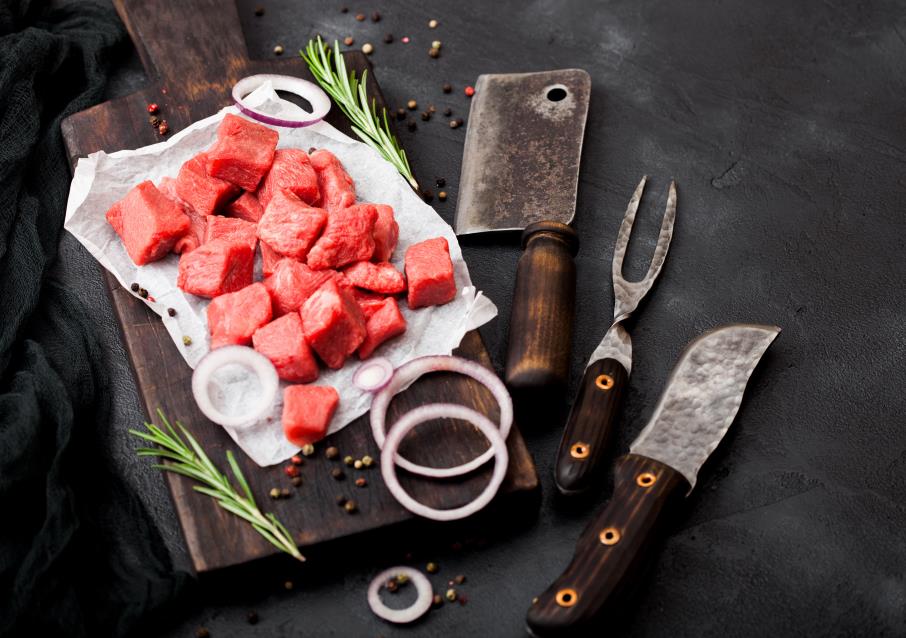
- The right meat cleaver for purchase should feel well balanced in the hand and settle deep into the customer’s palm to avoid wrist strain or discomfort during use
- A heavy meat cleaver will require a butcher’s block or very thick/sturdy cutting board as the cutting surface, advise your customer on purchase about suitable products they could consider
- When using a meat cleaver the free hand can be used to push the spine of the cleaver blade through the meat if necessary, this makes the cutting easier, particularly if the user is not very strong
- A meat cleaver handle with dimpling or a textured finish may attract and hold meat juices and fibers, this is a hygiene concern and customers should be advised how to achieve a balance between grip and hygiene
- Meat cleavers should be washed by hand and dried thoroughly after every use, never washed in a dishwasher
- Cost saving: a meat cleaver is a worthwhile investment as butchering your own meat saves you big bucks and allows for you to freeze large amounts of portioned meat for future use
What sort of markets is there for meat cleavers?
The market for meat cleavers is a large one. Any person who cooks a lot of meat at home or cooks outdoors (perhaps a hunter) will benefit from owning a quality meat cleaver.
As well as individuals, establishments like abattoirs, meat processing facilities, butcheries and restaurants would be needful of a cleaver’s strength and cutting prowess.
Many institutions butcher their own meat to cut down on costs. This includes military or navy kitchens, colleges and boarding schools, hospitals and hotels and so on. Basically, if meat is being butchered or cut, there is a defined need for a meat cleaver!
Meat Cleaver FAQs
In conclusion
Thank you for joining us for this thwacking look at the heavy and robust meat cleaver, we’ve had great fun discussing this important kitchen tool.
Not only are meat cleavers a carnivore’s tool of choice, but if used and appreciated properly they can become kitchen mainstays and fulfil functions beyond butchery.
Do check out the rest of the LeeKnives product range, and remember, a quick quote is only a click away! We look forward to hearing from you and assisting you further with any knife retail queries you may have.
